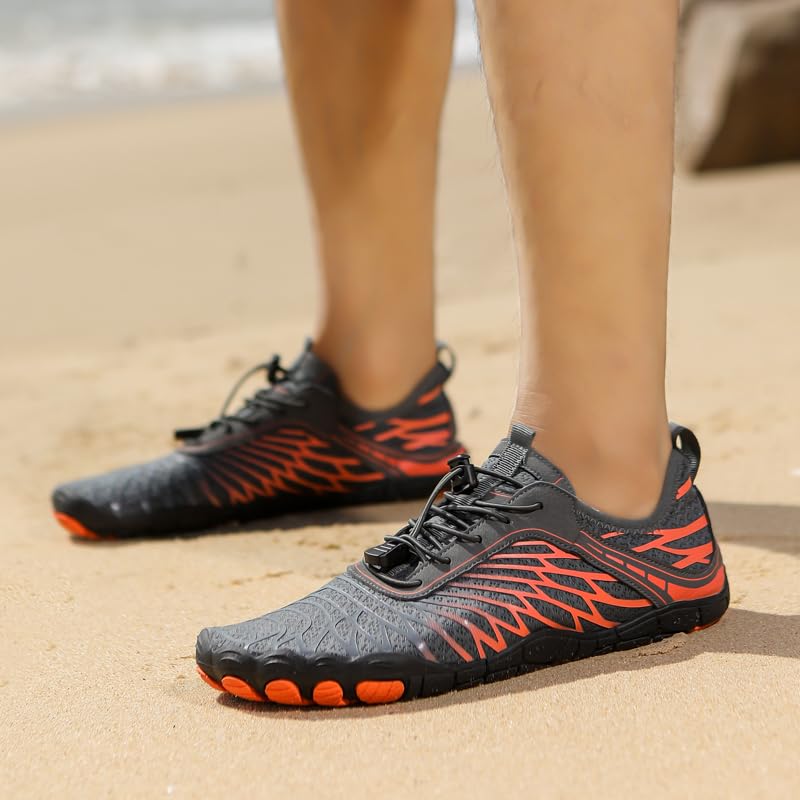In recent years, barefoot shoes have gained popularity among fitness enthusiasts, casual walkers, and anyone seeking a healthier approach to foot mechanics. Designed to mimic the natural movement of the foot while providing protection, barefoot shoes allow individuals to move freely and improve balance, posture, and overall foot health. Unlike traditional footwear, which often restricts movement and alters gait, barefoot shoes encourage a more natural walking or running experience, promoting both comfort and function.
Understanding Barefoot Shoes
Barefoot shoes are minimalist footwear designed to protect the feet from environmental hazards while allowing natural motion. They feature thin, flexible soles, a wide toe box, and minimal arch support, encouraging the foot to move as it would when unshod. This design supports proper alignment, strengthens foot muscles, and enhances proprioception—the body’s ability to sense its position and movement in space.
Traditional shoes often include thick soles, elevated heels, and rigid structures that can alter gait patterns and weaken foot muscles over time. By contrast, barefoot shoes enable the foot to flex, spread, and roll naturally during walking, running, or daily activities. The result is improved foot strength, reduced strain on joints, and a more efficient and balanced stride.
Health Benefits of Barefoot Shoes
Wearing barefoot shoes offers a range of health benefits, particularly in promoting natural movement and balance. One significant advantage is the strengthening of foot muscles. The unrestricted movement allows small muscles in the feet and ankles to work more effectively, improving overall stability and reducing the risk of injury.
Balance and proprioception are also enhanced with barefoot shoes. Because the feet have direct contact with the ground, the body receives constant feedback, helping to refine movement patterns and improve coordination. This benefit is particularly valuable for older adults, athletes, and individuals recovering from injuries, as enhanced balance can prevent falls and support safe movement during exercise or daily routines.
Barefoot shoes may also alleviate common foot problems such as bunions, plantar fasciitis, and flat feet. By allowing toes to spread naturally and promoting proper alignment, these shoes can reduce pressure points and support long-term foot health. Additionally, some users report decreased knee, hip, and lower back discomfort, as the improved alignment and gait mechanics reduce strain on these joints.
Integrating Barefoot Shoes into Daily Life
Transitioning to barefoot shoes requires patience and gradual adaptation, as the foot muscles need time to adjust to the increased range of motion and reduced cushioning. Beginners are encouraged to start with short periods of walking or light activity, gradually increasing duration and intensity. This approach helps prevent overuse injuries, such as stress fractures or tendon irritation, which can occur when the feet are suddenly subjected to unfamiliar movement patterns.
When integrating barefoot shoes into fitness routines, it is important to focus on proper technique. Walking or running with a midfoot or forefoot strike, rather than a heel-first landing, helps distribute impact forces evenly and reduces the risk of injury. Strengthening exercises for the feet, ankles, and calves complement the benefits of barefoot shoes, supporting stability and functional movement.
In addition to exercise, barefoot shoes can be incorporated into daily activities, including commuting, casual walking, and light outdoor adventures. Their flexible design and lightweight construction make them versatile for a variety of environments, allowing users to enjoy the advantages of natural movement throughout the day.
Choosing the Right Barefoot Shoes
Selecting the right barefoot shoes is essential to maximize their benefits and ensure comfort. Key considerations include fit, sole thickness, and toe box width. The shoe should allow the toes to spread naturally without compression, and the sole should provide adequate protection while remaining flexible enough to support natural foot motion.
Material quality is another important factor. Breathable, durable materials enhance comfort, prevent excessive moisture, and ensure the shoes withstand regular use. Some barefoot shoes include removable insoles, allowing for slight customization without compromising the minimalist design.
Individuals with specific foot conditions may benefit from consulting a healthcare or footwear professional before transitioning to barefoot shoes. Personalized recommendations can help address unique needs, prevent injury, and guide a safe adaptation process.
Long-Term Advantages of Barefoot Shoes
Over time, consistent use of barefoot shoes can lead to stronger, healthier feet and improved overall balance. Strengthened muscles, enhanced proprioception, and improved alignment contribute to better performance in athletic activities, reduced injury risk, and increased comfort during daily movement.
Furthermore, barefoot shoes encourage a more conscious approach to movement. Users often become more aware of their posture, stride, and foot placement, fostering a greater connection between the body and the environment. This mindful movement enhances coordination and can support broader aspects of health and fitness, including core stability and joint longevity.
As part of a holistic lifestyle, barefoot shoes complement other wellness practices such as stretching, strength training, and low-impact exercise. Their emphasis on natural movement reinforces healthy biomechanics and helps individuals maintain mobility, strength, and balance throughout life.


